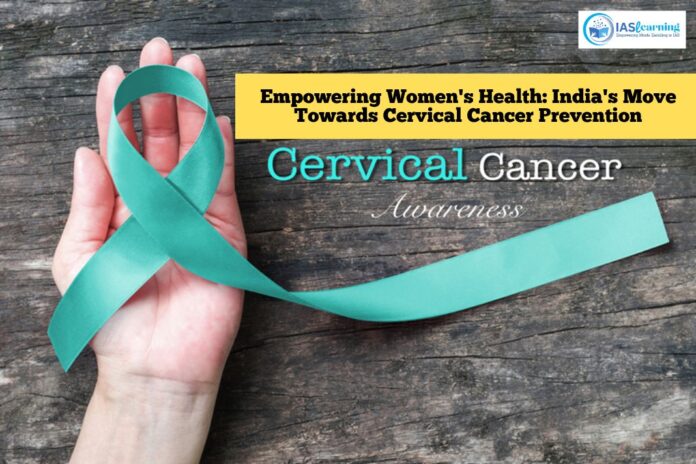Introduction Cervical Cancer
In a significant stride towards women’s health, the Indian government is gearing up to include the cervical cancer vaccine in the universal immunization program. This proactive step aims to target girls in the 9-14 age group, with the vaccination campaign set to commence this year. Understanding the reasons behind cervical cancer, preventive measures, and the strategies implemented by the government sheds light on the broader effort to curb this disease.
Understanding Cervical Cancer: Causes and Preventive Measures

1. Cervical Cancer Causes:
Cervical cancer primarily stems from the presence of high-risk types of Human Papilloma Virus (HPV) infection. Several contributing factors increase the risk of progression to cancer, including:
- Low Socio-economic Conditions: Economic disparities can impact access to healthcare and awareness.
- Low Immunity Status: Weakened immunity makes individuals more susceptible to infections.
- Other Genital Infections: Coexisting infections can elevate the risk.
- Smoking: A modifiable risk factor that contributes to cervical cancer.
2. Prevention and Cure:
- Prevention through HPV Vaccination: The government’s move to include HPV vaccination in the universal immunization program is a crucial step in preventing cervical cancer. Vaccinating girls in the 9-14 age group can significantly reduce the risk.
- Early Detection for Cure: Cervical cancer has a long pre-invasive phase, providing a window of opportunity for early detection and treatment. When managed at an early stage, cervical cancer has a cure rate exceeding 93%.
Challenges Leading to High Mortality: Tackling the Barriers

1. Lack of Early Detection:
- Lack of Awareness: Limited awareness about cervical cancer and its preventive measures.
- Fear of Cancer: Fear often deters women from seeking early detection and screening.
- Subtle Early Symptoms: Early symptoms may not be evident, delaying diagnosis.
- Low Screening Rates: Insufficient screening contributes to late-stage detection.
2. Dropping out of Treatment:
- Incomplete Treatment: Patients dropping out after screening hampers the effectiveness of preventive measures.
WHO Strategy: A Comprehensive Approach
The World Health Organization (WHO) advocates a three-pillar strategy to combat cervical cancer:
- Widespread HPV Vaccination:
- Screening of Women:
- Early Diagnosis and Treatment:
Government Initiatives and Future Directions

1. Government Initiatives:
- Cancer Screening in Primary Health Centers: Trained nurses conduct screenings in primary health centers.
- Accessible Screening Tools: Visual screening tests and HPV tests are simple and readily available.
- Evidence-Based Management Algorithms: Guiding decisions through evidence-based approaches.
2. Future Directions:
- Raising Awareness: Focusing on awareness about cervical cancer causes, prevention methods, and the importance of HPV vaccination.
- Capacity Building: Strengthening capacities for pre-cancer treatment, quality cancer treatment, and palliative services.
- Incorporating New Technologies: Integrating advancements like single-dose HPV vaccination, self-sampling for HPV testing, and AI for diagnosis and treatment.
- Strengthening Health Insurance: Mechanisms to alleviate the financial burden of care should be reinforced.
- Cooperation with Civil Society: Enhancing partnerships with NGOs, innovators, and public health professionals.
- Collaborations in Research: Engaging in collaborations and partnerships for the latest research initiatives.
- Adopting Best Practices: Incorporating successful models in community outreach and care pathways.
Conclusion: A Holistic Approach Towards Women’s Health
As India takes decisive steps in cervical cancer prevention, the emphasis must be on a holistic approach. By addressing barriers, raising awareness, and incorporating technological advancements, the nation can pave the way for a healthier future. The integration of preventive measures, early detection, and robust partnerships with diverse stakeholders underscores India’s commitment to empowering women’s health in the face of cervical cancer.




